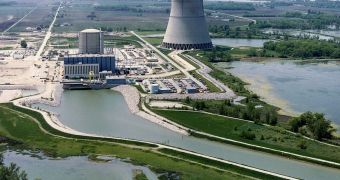Nuclear power is far from being a risk-free source of energy. After the Fukushima disaster, governments worldwide are thinking about less risky methods of responding to the energy demand.
On the other hand, FirstEnergy and the Nuclear Regulatory Commission have decided to give the green light to the reopening of Davis-Besse Nuclear Power Plant, shut down after experts discovered that one of its reactors displayed a 30-foot severe hairline crack, NorthWestOhio informs. NorthWestOhio informs.
Even under these circumstances, authorities have decided the factory, located on the southwest shore of Lake Erie about 10 miles (16 km) north of Oak Harbor, operated by FirstEnergy, could reopen only six weeks after the incident, since it did not pose any environmental risks.
Some voices tend to disagree. Hundreds of anti-nuclear activists, demonstrators and politicians have decided to manifest their disapproval during a meeting, firmly convinced that operations developed at Davis-Besse could threaten their wellbeing.
"If the core melts down, if the metal containment structure fails, you've got the concrete containment structure. Well it is severely cracked," indicated Kevin Kamps from Beyond Nuclear.
Nevertheless, during the meeting, both NRC authorities and officials from the damaged powered plant have highlighted that measures of precaution are being taken into consideration and that the processes developed at the facility are risk-free.
"The shield building is capable of performing its intended function and is suitable for operating conditions," affirmed Davis-Besse Site Vice President Barry, while trying to annihilate the general concerns.
At the same time, demonstrators opposing the reopening of the plant have suggested that officials from the nuclear plant are currently minimizing the importance of the crack.
One of the most vehement protesters is Congressman Dennis Kucinich, indicating that the operations might be much more dangerous than the plant officials are willing to admit, since the causes of the crack are still uncertain.
Since its early beginnings, the power plant has experienced several incidents, but none of them has triggered an exposure to hazardous levels of radiation so far.

 14 DAY TRIAL //
14 DAY TRIAL // 